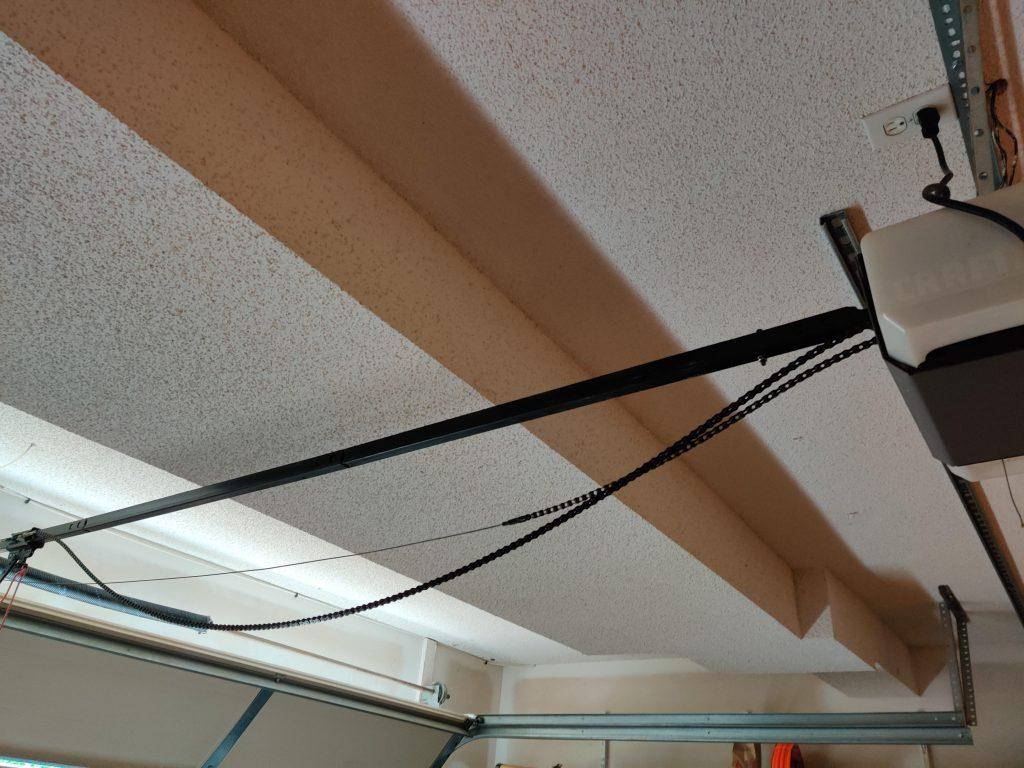A garage door opener is a convenient and essential tool that allows you to open and close your garage door with ease. However, over time, you may encounter issues with your garage door opener, such as a loose chain. A loose chain can cause the garage door to operate improperly, create loud noises, and even pose safety risks. In this article, we will guide you through troubleshooting and fixing a loose chain on your garage door opener, ensuring smooth and efficient operation.

Understanding the Role of the Garage Door Opener Chain:
The chain on a garage door opener is a crucial component that connects the motor to the door’s trolley. As the motor runs, the chain moves the trolley along the opener’s rail, which is attached to the garage door. This movement allows the garage door to open and close smoothly. However, if the chain becomes loose, it can disrupt the proper functioning of the garage door opener.
Identifying a Loose Chain
Before attempting to fix the loose chain, you need to confirm that it is indeed the issue causing problems with your garage door opener. The following signs may indicate a loose chain:
- Excessive Noise: If you hear loud banging or rattling noises when operating the garage door, it could be due to a loose chain hitting against the rail or other parts.
- Jerky Movements: A loose chain may cause the garage door to open and close in a jerky or uneven manner, rather than moving smoothly along the rail.
- Sagging Chain: Visually inspect the chain to see if it appears saggy or loose. It should be taut and firm when the door is in the closed position.
Tightening the Chain
Once you have confirmed that the chain is loose, follow these steps to tighten it:
- Disconnect the Opener: Start by disconnecting the garage door opener from the power source to ensure your safety while working on it.
- Access the Trolley: Locate the trolley on the garage door opener’s rail. This is the part that moves along the rail and is connected to the chain.
- Adjust the Chain Tension: Most garage door openers have an adjustment mechanism to tighten or loosen the chain. Look for the tension adjustment nut on the trolley and use a wrench to turn it clockwise to tighten the chain. Be careful not to over-tighten the chain, as it should have a slight amount of slack.
Checking the Balance and Alignment
After tightening the chain, it’s essential to ensure that the garage door is properly balanced and aligned. An imbalanced or misaligned door can put strain on the chain and cause it to become loose again.
- Test the Balance: Disconnect the garage door opener and manually open the door halfway. If the door remains in place, it balances. If it falls or rises on its own, it may have an imbalance, and you may need to adjust the springs or seek professional assistance.
- Check Alignment: Observe the garage door as it moves along the rail while operating the opener. The door should move smoothly without any rubbing or binding. If there are alignment issues, adjust the track or seek professional help to ensure proper alignment.
Conclusion:
A loose chain on your garage door opener can lead to operational issues and safety concerns. By identifying the signs of a loose chain and following the steps to tighten it, you can restore proper functionality to your garage door. Additionally, checking the balance and alignment of the door ensures that the chain operates smoothly and reduces the risk of future chain looseness. Regular maintenance and occasional checks of the garage door opener can help prevent and address such issues promptly, ensuring smooth and efficient garage door operation for years to come. If you encounter difficulties or are unsure about any adjustments, it is always advisable to seek assistance from a qualified garage door professional.



Leave a Reply